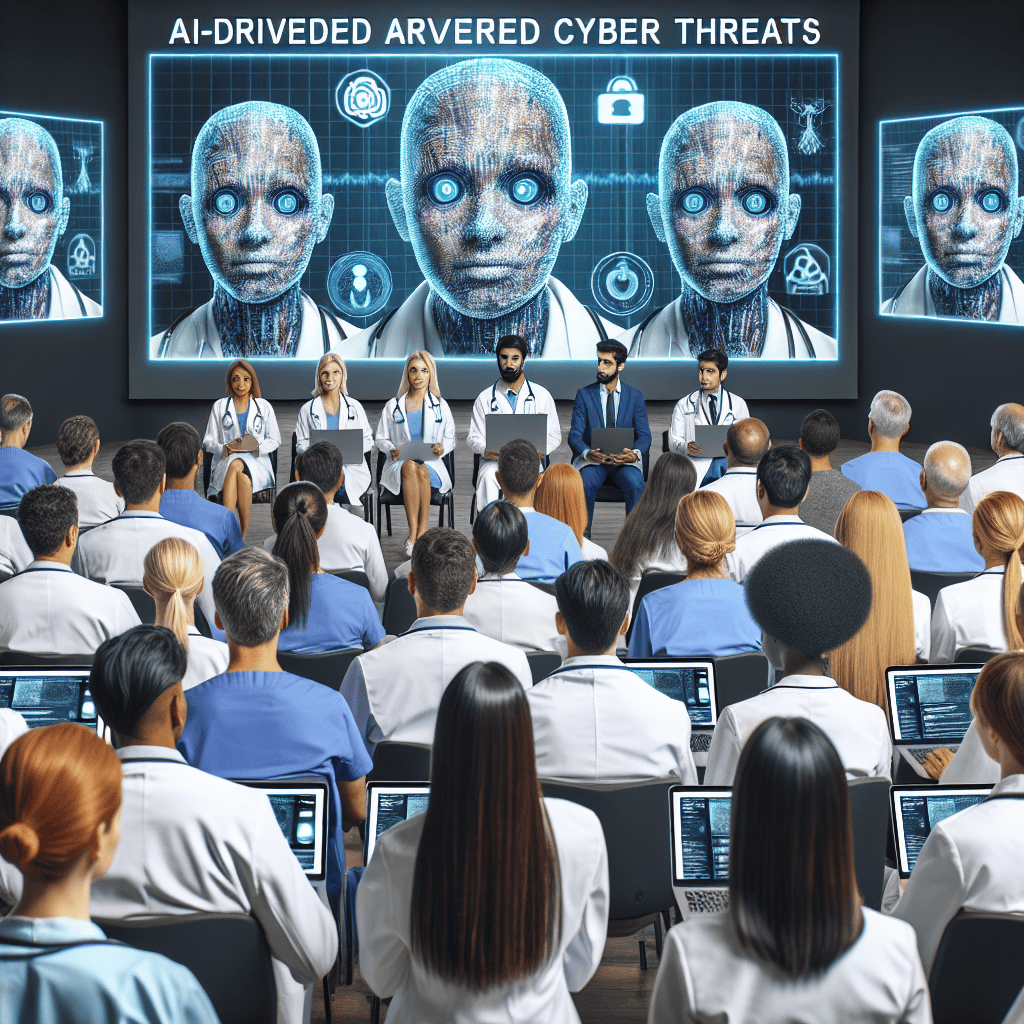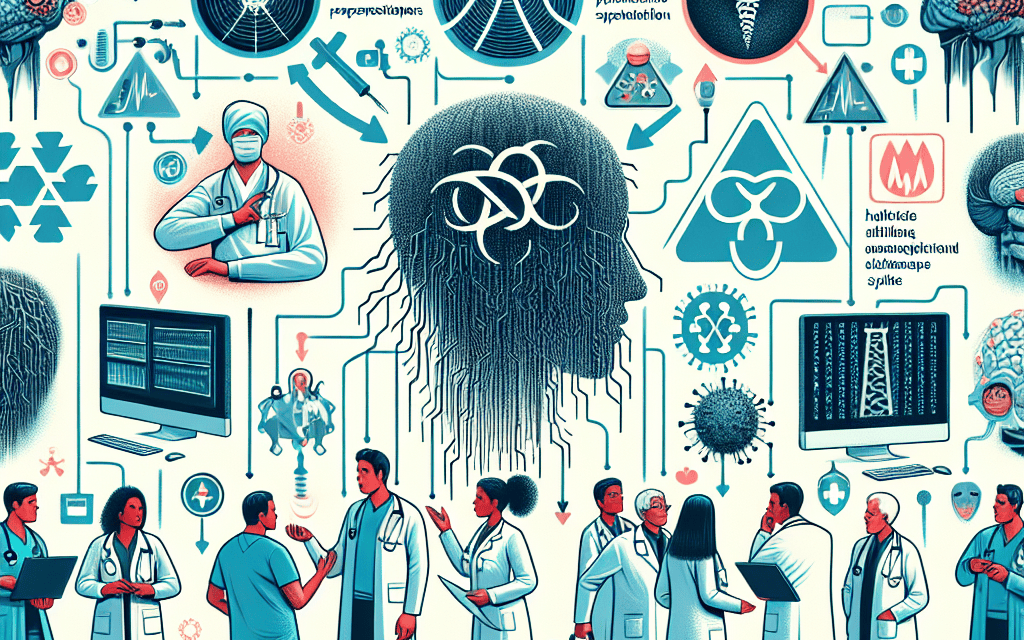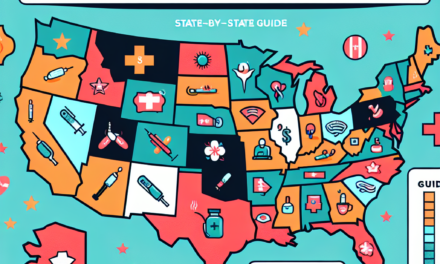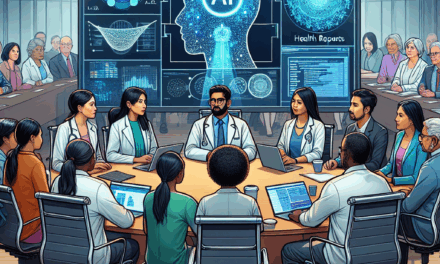Preparing Healthcare Workforces for AI-Driven Cyber Threats and Deepfakes

In the rapidly evolving landscape of healthcare, the integration of artificial intelligence (AI) has brought about transformative changes. However, with these advancements come new challenges, particularly in the realm of cybersecurity. AI-driven cyber threats and the emergence of deepfakes pose significant risks to the healthcare sector. This article delves into the intricacies of these threats and explores strategies to prepare healthcare workforces to combat them effectively.
Understanding AI-Driven Cyber Threats in Healthcare
AI-driven cyber threats are a growing concern in the healthcare industry. As healthcare systems become increasingly digitized, they become more vulnerable to sophisticated cyberattacks. These threats can compromise patient data, disrupt healthcare services, and erode trust in healthcare institutions.
AI technologies can be used by cybercriminals to automate and enhance their attacks. For instance, AI can be employed to identify vulnerabilities in healthcare systems, craft convincing phishing emails, and even bypass traditional security measures. The healthcare sector, with its vast repositories of sensitive data, is a prime target for such attacks.
One notable example of AI-driven cyber threats is ransomware attacks. In recent years, there have been several high-profile ransomware attacks on healthcare institutions. These attacks often involve the use of AI to identify and exploit vulnerabilities in hospital networks, leading to the encryption of critical data and demands for ransom payments.
To combat these threats, healthcare organizations must adopt a proactive approach to cybersecurity. This includes investing in advanced security technologies, conducting regular security audits, and training staff to recognize and respond to potential threats. By understanding the nature of AI-driven cyber threats, healthcare workforces can better prepare themselves to defend against them.
The Rise of Deepfakes and Their Implications for Healthcare
Deepfakes, a form of synthetic media created using AI, have emerged as a significant threat to the healthcare industry. These manipulated videos and audio recordings can be used to spread misinformation, damage reputations, and even manipulate medical records.
Deepfakes are created using deep learning algorithms that can generate highly realistic images, videos, and audio. In the context of healthcare, deepfakes can be used to impersonate healthcare professionals, spread false information about medical treatments, or even create fake medical records. The potential for harm is significant, as deepfakes can undermine trust in healthcare providers and lead to dangerous medical decisions.
One concerning example is the use of deepfakes to impersonate doctors or healthcare officials. In such cases, deepfakes can be used to spread false information about medical treatments or public health measures, leading to confusion and potentially harmful outcomes for patients.
To address the threat of deepfakes, healthcare organizations must implement robust verification processes and educate their staff about the risks associated with synthetic media. By staying informed about the latest developments in deepfake technology, healthcare workforces can better protect themselves and their patients from this emerging threat.
Strategies for Building a Resilient Healthcare Workforce
Building a resilient healthcare workforce is essential to effectively combat AI-driven cyber threats and deepfakes. This involves equipping healthcare professionals with the knowledge and skills needed to recognize and respond to these threats.
One key strategy is to provide comprehensive cybersecurity training for all healthcare staff. This training should cover the basics of cybersecurity, as well as specific threats related to AI and deepfakes. By educating staff about the potential risks and how to mitigate them, healthcare organizations can create a culture of security awareness.
Another important aspect of building resilience is fostering collaboration between different departments within healthcare organizations. Cybersecurity is not solely the responsibility of IT departments; it requires a coordinated effort from all staff members. By encouraging open communication and collaboration, healthcare organizations can ensure that everyone is working together to protect against cyber threats.
Additionally, healthcare organizations should invest in advanced security technologies that leverage AI to detect and respond to threats in real-time. These technologies can help identify anomalies in network traffic, detect phishing attempts, and even predict potential cyberattacks before they occur.
- Comprehensive cybersecurity training for all staff
- Fostering collaboration between departments
- Investing in advanced security technologies
By implementing these strategies, healthcare organizations can build a resilient workforce that is well-prepared to face the challenges posed by AI-driven cyber threats and deepfakes.
Case Studies: Lessons Learned from Real-World Incidents
Examining real-world incidents can provide valuable insights into the challenges and solutions related to AI-driven cyber threats and deepfakes in healthcare. By analyzing these cases, healthcare organizations can learn from past mistakes and implement effective strategies to prevent similar incidents in the future.
One notable case is the ransomware attack on the University of Vermont Health Network in 2020. This attack disrupted hospital operations for several weeks, highlighting the vulnerability of healthcare systems to cyberattacks. The incident underscored the importance of having robust backup systems and incident response plans in place.
Another example is the use of deepfakes in a phishing campaign targeting a major pharmaceutical company. In this case, cybercriminals used deepfake audio to impersonate a company executive and trick employees into transferring funds. This incident demonstrated the need for strong verification processes and employee training to recognize and respond to such threats.
These case studies illustrate the diverse nature of AI-driven cyber threats and deepfakes in healthcare. By learning from these incidents, healthcare organizations can better prepare themselves to defend against similar attacks in the future.
Future Trends and Preparing for Emerging Threats
The landscape of AI-driven cyber threats and deepfakes is constantly evolving. As technology advances, new threats are likely to emerge, posing additional challenges for the healthcare sector. To stay ahead of these threats, healthcare organizations must be proactive in their approach to cybersecurity.
One emerging trend is the use of AI to automate cyberattacks. As AI technology becomes more sophisticated, cybercriminals are likely to leverage it to conduct more targeted and efficient attacks. This could include the use of AI to identify vulnerabilities in healthcare systems or to craft highly convincing phishing emails.
Another trend is the increasing use of deepfakes in social engineering attacks. As deepfake technology becomes more accessible, cybercriminals may use it to impersonate healthcare professionals or spread false information about medical treatments. This could have serious implications for patient safety and trust in healthcare institutions.
To prepare for these emerging threats, healthcare organizations must stay informed about the latest developments in AI and cybersecurity. This includes investing in ongoing training for staff, implementing advanced security technologies, and fostering a culture of security awareness.
- Staying informed about AI and cybersecurity developments
- Investing in ongoing staff training
- Implementing advanced security technologies
By taking these proactive measures, healthcare organizations can better protect themselves and their patients from the evolving landscape of AI-driven cyber threats and deepfakes.
Conclusion
In conclusion, the integration of AI in healthcare brings both opportunities and challenges. AI-driven cyber threats and deepfakes pose significant risks to the healthcare sector, but with the right strategies and preparation, these threats can be effectively managed. By understanding the nature of these threats, building a resilient workforce, learning from real-world incidents, and preparing for emerging trends, healthcare organizations can safeguard their systems and protect patient data. As technology continues to evolve, staying informed and proactive will be key to ensuring the security and integrity of healthcare systems in the face of AI-driven cyber threats and deepfakes.





